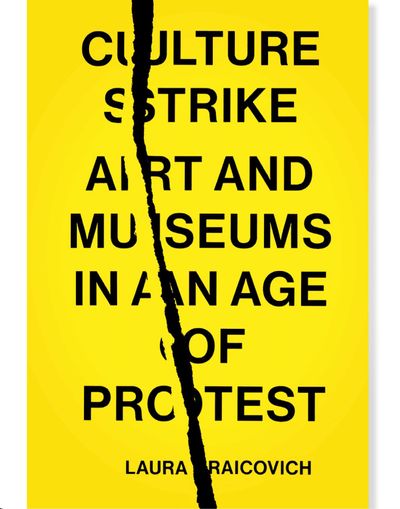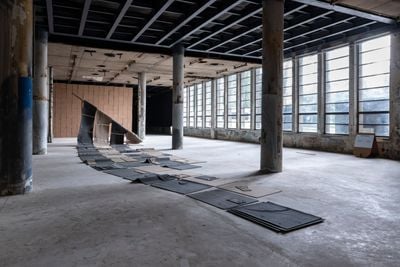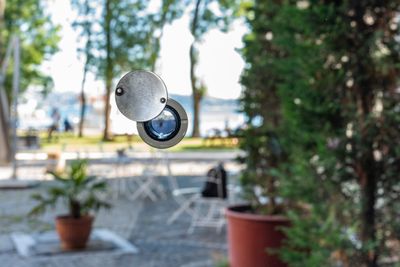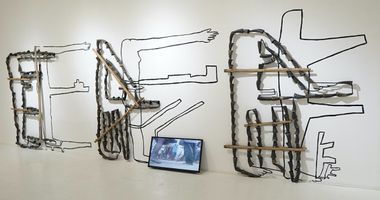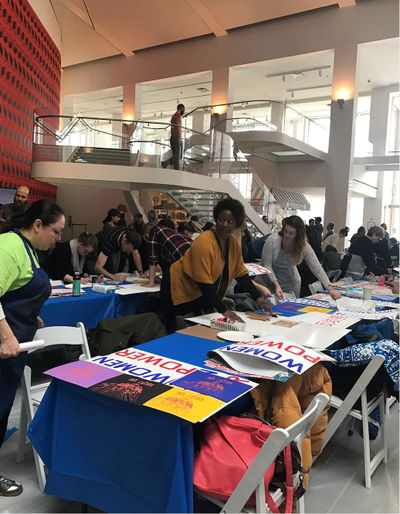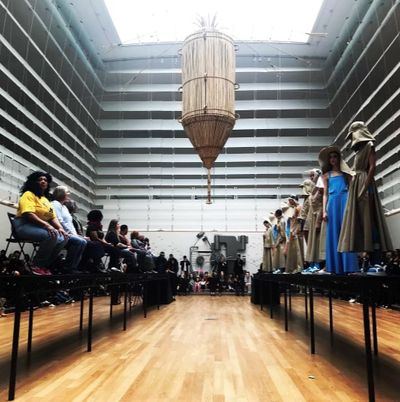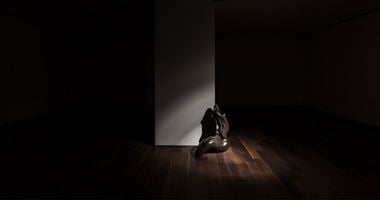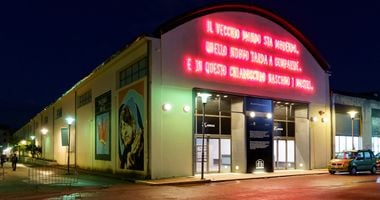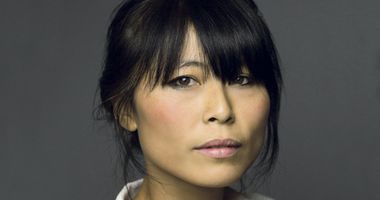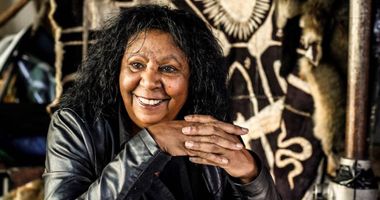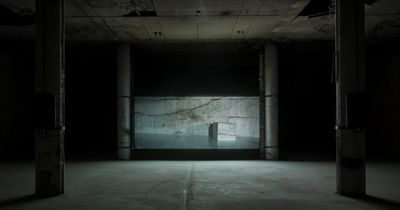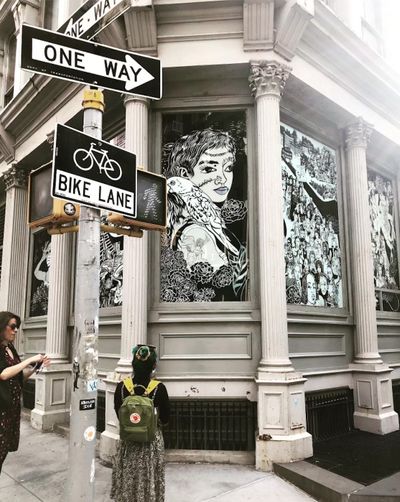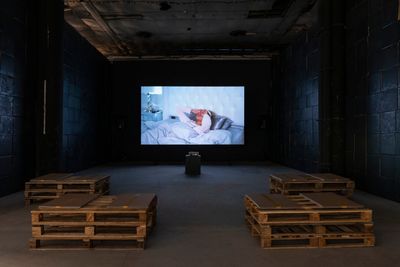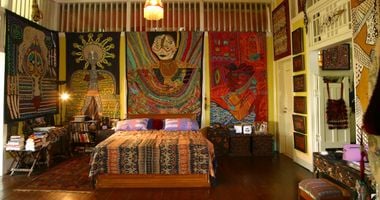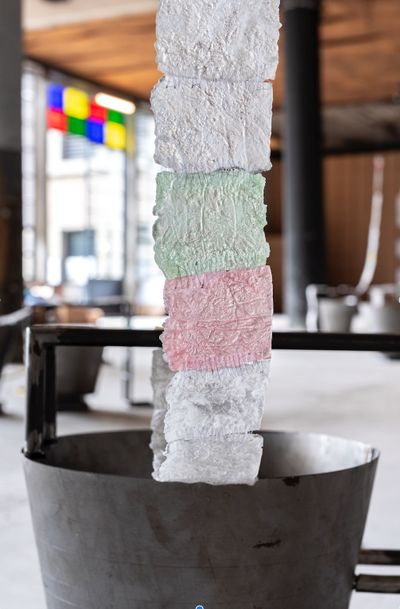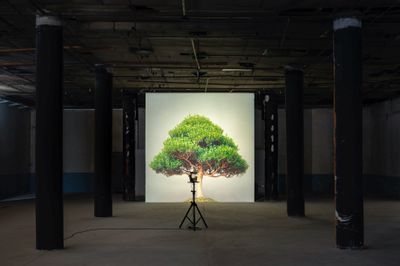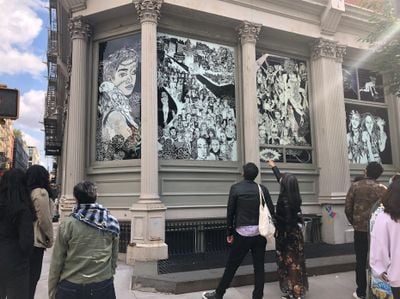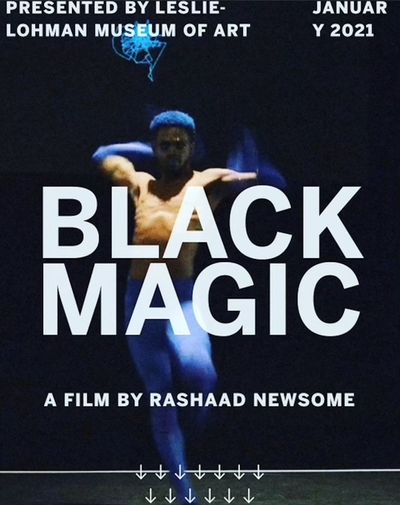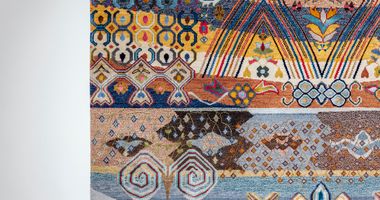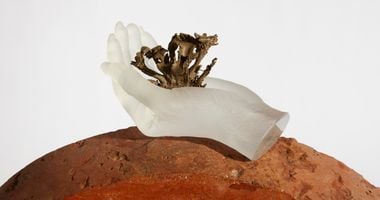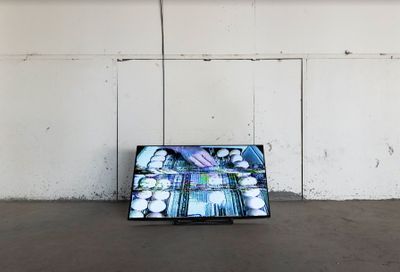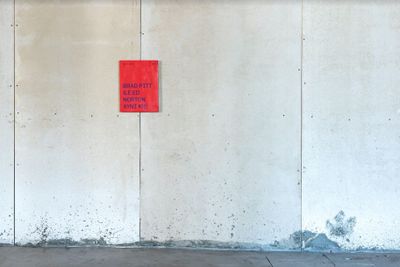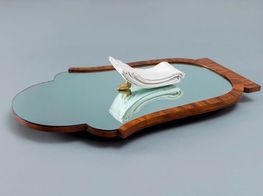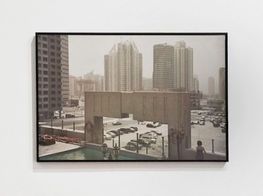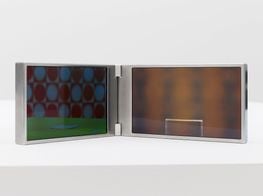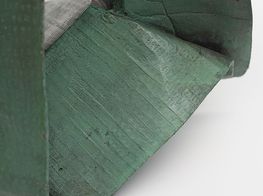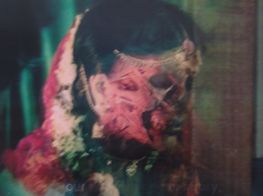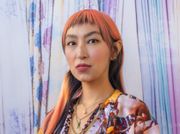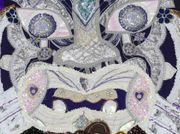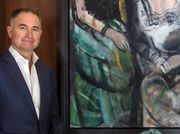Laura Raicovich on Art and Museums in an Age of Protest
In Partnership With Protocinema
Laura Raicovich in conversation with Mari Spirito, Protocinema. Courtesy Protocinema.
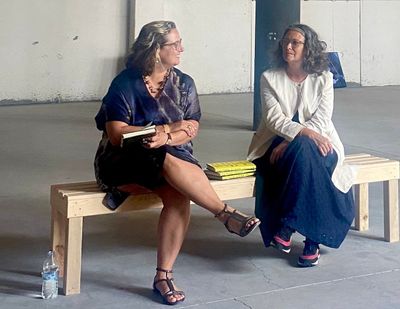
Laura Raicovich in conversation with Mari Spirito, Protocinema. Courtesy Protocinema.
Published by Verso Books in June 2021, Culture Strike: Art and Museums in an Age of Protest by curator Laura Raicovich considers museums in an age of political upheaval.
Raicovich left her position as director at the Queens Museum in New York in 2018 following clashes with the institution's board members around matters regarding an Israeli government event being hosted at the Museum, where former U.S. Vice President Mike Pence was a speaker.
Following her departure, Raicovich began to inquire into questions around institutional neutrality, and was offered a grant to conduct a series of interviews with colleagues, artists, curators, and thinkers to analyse the evolution of the museum in the United States in comparison to Europe.
The resulting publication, Culture Strike: Art and Museums in an Age of Protest, was conceived as a 'proposal of a love story', and poses questions around the future of institutions both in the U.S. and globally.
Advocating for 'protest as a radical form of care', the book offers key contextual and historical lenses through which to consider protests that have occurred at institutions worldwide, addressing topics from museum funding to workers' rights.
On 25 September 2021, Raicovich joined curator Mari Spirito at Protocinema—a cross-cultural art organisation based in New York and Istanbul—to discuss the book.
The talk took place in Istanbul on the occasion of Once Upon A Time Inconceivable (4 September–10 October 2021), Protocinema's 10th anniversary exhibition with works by Abbas Akhavan, Hera Büyüktaşçıyan, Banu Cennetoğlu, Ceal Floyer, Gülşah Mursaloğlu, Zeyno Pekünlü, Paul Pfeiffer, Amie Siegel, and Mario García Torres.
In keeping with Raicovich's book, the exhibition engaged Protocinema's ongoing examination of what an art organisation or initiative can be.
MSTo start, could you talk about how the writing of Culture Strike stemmed from your work in and with institutions?
LRThe trajectory of my career working with institutions both large and small, resourced and very under-resourced, has played a huge role in writing this book. In addition to being a book about what institutions do wrong, it's primarily a book about what institutions can do.
In my view, it's really a love story, or a proposal of a love story, and how my personal experiences within cultural spaces have evolved over time. The book is especially influenced by my experience at the Queens Museum, where after my first six months there, Donald Trump was elected President of the United States, which dramatically shifted the realities on the ground.
I often say that the Queens Museum is a public museum in a public park in one of the most diverse locations on the planet, because so many different immigrant communities live in the borough, which is one of New York's largest geographically. Most immigrants who come to New York never leave Queens, because they land at the airport there, and that's where they stay.
You really cannot have a museum without the person who lives next door.
The precarity and fear that was visited upon these immigrant communities, whether recent immigrants or people who had been living in the United States for a long time, due to the anti-immigrant rhetoric of the Trump campaign and subsequent administration, was intense.
The material conditions on the ground in Queens were very different from, say, Manhattan, just across the river. For me, it was very important that we were forthright about our positionality in relation to the communities with whom we've collaborated as an institution for many years, even before I got there: local community groups, frontline organisations, immigrant rights organisations, and so on.
It was really important that we signalled to those collaborators and co-conspirators that we were with them. And so there were a number of initiatives that I was really committed to, but that the Museum board became resistant to—not the whole board, just a couple of people, but a few people is all it takes.
It wasn't that they were Trump supporters. It's more subtle than that. It's that they were people who were afraid that we would become targeted, and I couldn't see their potential discomfort as more important than the actual threat that immigrants living around the Museum were facing daily.
At this point, many people were not sending their children to school, and were afraid to leave their homes. If there was a two-parent household, only one parent would leave at a time, never both together. It didn't matter if people were documented or not, that wasn't the dividing line. People were just afraid of being in the wrong place.
There was a great campaign on the part of Trump to repeal DACA (Deferred Action for Childhood Arrivals): an executive order signed by President Obama that enabled people who were born in the United States but didn't have documentation to get this DACA certification to live legally in the United States, because without that, you couldn't get a Social Security card or a proper driver's licence.
Many of these people with DACA had become adults and had never been to the country that their parents left before they were born. Some of the people on my staff literally didn't know if they were going to get deported when Trump was elected because of his push to repeal DACA. So the conditions were very real.
I had staff meetings the day after the results of the election came in. We were like 45 people, and everybody was crying. We didn't know what to do. It was terrifying, actually. So we decided collectively to make our values known and clear, to restate them—to brainstorm ways of helping local community groups provide assurances, and make it clear that we are here to support the communities that we've been with for a long time.
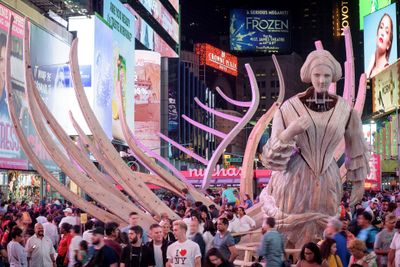
It came to a point where I did not feel like I could ethically move forward as director of the Museum because these few board members were opposing all the things we felt were necessary at this time. They were insisting that we had to stay neutral and could not take a position on Donald Trump.
The New York Times had done a profile about me and the interesting things that the Queens Museum was doing, and I used that as leverage. We signed up to join the art strike and closed the Museum on the day of the presidential inauguration, and the board were very upset about that—not because they supported Trump, but because they thought we should be neutral. That's how I became really obsessed with why a museum would think it's neutral.
MSAnd this question of museum neutrality set you on a path to speaking with cultural workers about this issue, right?
LRIt seems ridiculous in contemporary society—how would any institution benefit from this perceived neutrality? I thought, okay, let's talk about this, and I was able to get a grant to do a series of interviews with colleagues, artists, curators, and thinkers.
As I got deeper into the interviews, I realised that I was on my way to writing a book, because I realised what was essential is the history of the museum in the United States in comparison to Europe.
I think part of the thing that capitalism does is that it breaks down our imagination, so we can only see so much. But really, the world is infinite.
In Europe, museums largely came out of royalty and the Church. The collections that they made over time were also about the consolidation of wealth and power on a variety of different scales and paths.
As a young nation, the United States had a real need to prove itself as a cultural force, and institution-building, like museums and libraries, was very important to nation-building.
The colonial project in the United States is not only about the dispossession of land and resources from Indigenous peoples, but also the taking of material culture from places around the world to prove that those riches could be consolidated as cultural centres, as in Europe.
MSCould you elaborate on how this consolidation was accomplished in the United States?
LRWell, there were lots of men of a certain race, class, and educational background who started collecting stuff—whether books, art objects, or cultural material—and they travelled to places that they were interested in, and they sought out people who their friends knew. It was all very subjective.
That's essentially the beginning of collections in the United States. So then you have these collections, and they exist in some guy's house, and when the guy dies, his heirs had to think about what they were going to do with his collection, and more often than not they donate it to the university that he went to, and that becomes housed in the university museum.
Suddenly, this collection, which was made by one human being with one point of view, makes claims towards universality. Within the format of the museum, this view becomes studied and reinforced over generations. It becomes the barometer of excellence, even though it started from a very narrow place. How can you possibly hold on to that?
I want to talk about where that falls apart and neutrality comes in. We have these institutions that characterise themselves as universal, which house objects from different cultures, many of which were stolen during the colonial era, like the Benin bronzes, which are actually exceedingly rare to see in Nigeria itself.
It is in these objects that this universal façade completely falls apart, because all of a sudden, the cultural patrimony that should be in the place of origin has been appropriated to a different geography.
MSBut even though you're highly critical of the institution, there is so much care in your interrogation of function and structure. You also recognise how the museum's historical roots do not necessarily reflect what's going on in larger society now and the evolving values around these stolen objects and claims to universality.
LRFor me, the structure of the museum is a useful one, to the extent that we pour an enormous amount of intellectual, creative, and financial capital into these institutions. And, frankly, as problematic as they can be, these are physical spaces in which we can gather, right?
A lot of people have asked me why we don't just throw away the museum altogether. But I'm not just talking about the Met. I'm also talking about Protocinema and organisations that are somewhere in between spaces of cultural production.
As Mari knows, from being an itinerant institution, finding spaces where you can gather can be both a beautiful challenge but also very difficult. Especially under different conditions.
One of the most radical things that we could do inside the institution is to think of protest as a radical form of care...
We have to not only care about who and what is represented in the galleries, but also how institutions operate. We have to create the structures that make sense, and don't just check boxes.
The museum is largely structured around this kind of neoliberal capitalist, patriarchal, white supremacist model; where the individual always trumps the collective, no pun intended. Our conception of the museum space should be one of extreme collectivity.
Museums, cultural institutions—all of them, no matter what the scale—are fundamentally a collective act. You really cannot have a museum without the person who lives next door.
You cannot have a museum without the people who clean the bathrooms or without the people who stand in the galleries to talk to visitors. You cannot have a museum without the education team. The people matter.
If you lose the people at the Queens Museum, you have no museum. It's the people that make it not only function, but have a certain sensibility of care and bring their life experience to it. And the diversity of that life experience is really important.
MSBut part of the way that people participate in the museum is by protesting, when they don't agree with what the organisation is doing. How do you reconcile this when an institution is trying to change, or claims that it is? How do we self-correct? I think part of the thing that capitalism does is that it breaks down our imagination, so we can only see so much. But really, the world is infinite.
LRI don't think it's necessarily about someone else becoming the director of an institution to make it better. No. The director has to become something else; to go beyond the power structures in existence.
One of the most radical things that we could do inside the institution is to think of protest as a radical form of care; a way for audiences and people who care about the organisation to communicate with the organisation they care enough about to protest for. It's expressing a desire to participate.
None of us are perfect. Even if all of the perfect conditions existed and everybody had the best intentions, we're going to make mistakes, especially when everything's breaking. How can we go forward without getting stuck in shaming? How can we move toward forgiveness?
Our conception of the museum space should be one of extreme collectivity.
Forgiveness is tough because there are some things that just can't be forgiven. I'm not going to forgive a fascist. I'm not going to have that conversation. That's my line. However, there's another space.
As a person who is white, American, middle class, a woman, a mother, a cultural worker, a writer, some of these identities allow me to see certain things that maybe another person who doesn't identify the way that I do doesn't. But I am also blind to things.
We need to understand that about each other, but we also have to be accountable for the things that we're blind to. The way that we can do that—or that I can do that—is by understanding whether I made a mistake and then apologise for it. That apology may not be accepted, and that's okay. But there are other things that I can do beyond expecting forgiveness.
I'll give you an example from an experience that I had. I was the interim director of the Leslie-Lohman Museum of Art for about ten months, an institution dedicated to queer art and artists in Manhattan. It was super intense and amazing.
Towards the very end of my time there, we were doing a public programme, and as I introduced the programme I misgendered one of the artists, and I immediately realised it. I just felt like, 'Oh, my God, I can't believe I just did that,' and I let out a nervous giggle and everybody was like, 'What the fuck?'
I talked to the artist afterwards, and I was super apologetic, but they didn't have to forgive me. It's on me to work it out because I made the mistake and I have to think of ways that I want to move forward to make amends for that transgression. I also don't want to always put the pressure on the person who is hurt to be the forgiver.
But when you think about this beyond the individual, between groups, it becomes a much bigger issue, and that's why I think we need cultural spaces, because acknowledgments and apologies for larger scale hurts that have been enacted over time—in part because of this idea of neutrality that absorbs the agendas and the biases of cultural spaces—have been denied for generations. It is not a difficult thing to do; to make space to talk about the histories and biases that museums have perpetrated.
There is something to be said about slowing down, too. There is not one cultural worker inside any institution of any scale in the United States who doesn't feel like they are running on a treadmill at, like, 60 miles an hour. They have no time to think about what they're doing, how they're doing it, and how they might do it differently.
Radically slowing down is really one of the biggest messages in the book, because this hyper productivity is also linked to extreme capitalism, which is the condition we're in and none of it makes any sense.
If we produce less, maybe we can be together and actually develop the relationships that we need to not hurt one another. Or if we do, then there's the possibility of working it out in a way that's different from this extremely divided space of contention.
There's this concept of executive function—a term that describes the ability to make decisions: capitalism 101. And children in the United States are diagnosed with excellent executive function in school.
I don't even know what this means at that age, but this idea of executive function, of being given only a few details and being able to make a decision, is actually the worst thing we could be trying to achieve. The whole point of decision-making is about making a decision that actually makes sense for everybody involved, and that has outcomes that are integrated.
The museum is largely structured around this kind of neoliberal capitalist, patriarchal, white supremacist model; where the individual always trumps the collective...
But I also resist this idea that decisions made by committees are terrible decisions. These are negotiations. These are ways that we can sit in conflict together and figure it out. It doesn't just waste time. I really resist this.
We've all been in meetings that are endless and stupid and horrible. That's not what I'm talking about. What I'm talking about is actually being in a place together where we see each other deeply, and we have a personal relationship based upon which we can move forward together.
And how do you negotiate that space? How do you negotiate the space for having conflict? This is hard work, and we all have to be willing to be a little bit vulnerable.
MSSpeaking of participating and pushing back on exclusivity born out of a broken universality, I'm wondering how the museum context might evolve to develop that kind of vulnerability that you mention?
LRMany museums do outreach, but the point of it is to bring you into the museum. It's not about understanding who you are, where you come from, what you're doing, or what your interests might be. And I think this broadcast communication methodology is part of why museums are so broken in the U.S. and probably elsewhere, too.
But we have to restart that engine to make them focus on exchange. And so one of the things that I really admire about my predecessor at the Queens Museum, Tom Finkelpearl, is that he hired actual community organisers to work on the staff of the Museum, not for the purpose of going out into communities and bringing people in, but offering whatever the Museum could do to support their cultural interests.
This is a way to honour the knowledge of people who have their own cultural interests and to acknowledge that perhaps what was happening in the Museum was of zero interest and to try and make a conversation between the two and to also recognise that the Museum had resources—intellectual resources, staff resources, and financial resources that it could lend to support cultural production in neighbourhoods near the Museum.
And again, if we think about categories of imperialist act, if you try to take things apart that way and make people really understand what everyone else is doing, that's also part of the work. So I think the protest has to happen on many different registers, and it doesn't necessarily need to be coordinated.
I think that pressure is really important, but then also infiltrating the museum as cultural workers and making the kinds of demands that people inside the museum are making—that's also really essential, because otherwise you don't get it.
In the West, museums and history imagine storytelling as linear. But what if, instead, we imagine time as a spiral? It doesn't matter which way it goes, because if it's a spiral, we can jump time.
It's easier to jump time this way than it is to go back to the beginning. So, in a way, we can create solidarities across time, geographies, humans, and non-humans, because we know we can do that now in many ways.
I think there's something about having this more circuitous and non-linear structure that can help us imagine a different way, perhaps being maybe a little more generous. A plurality. —[O]



